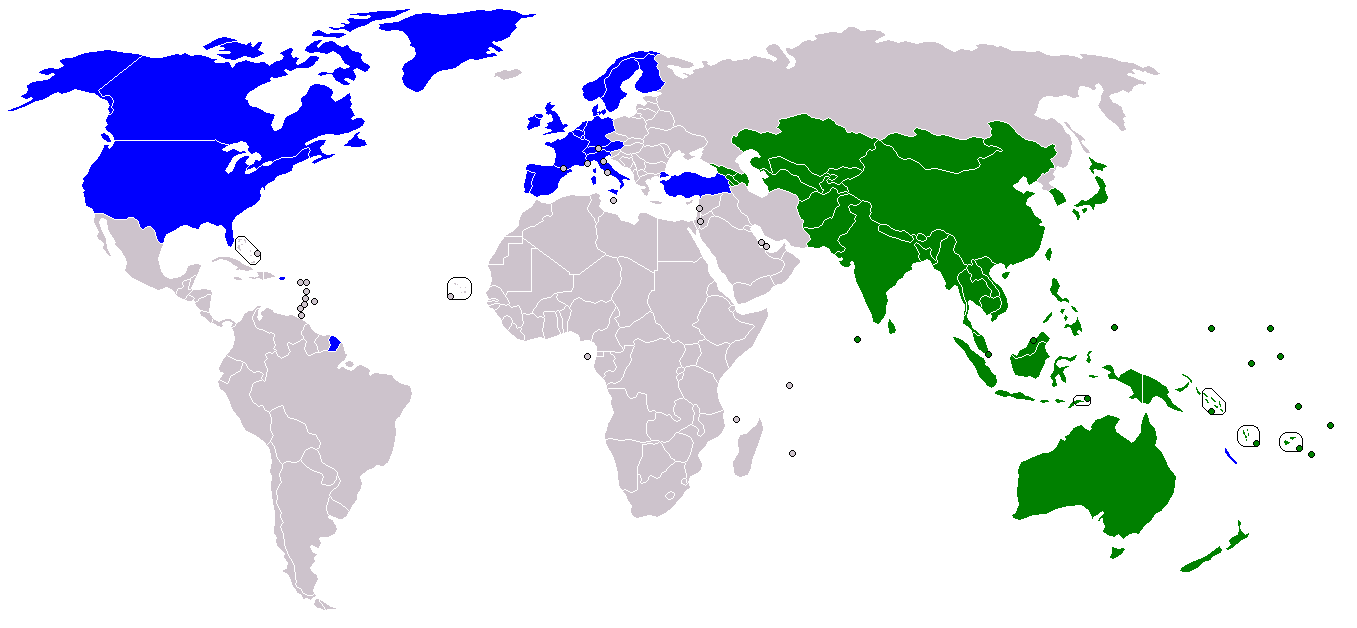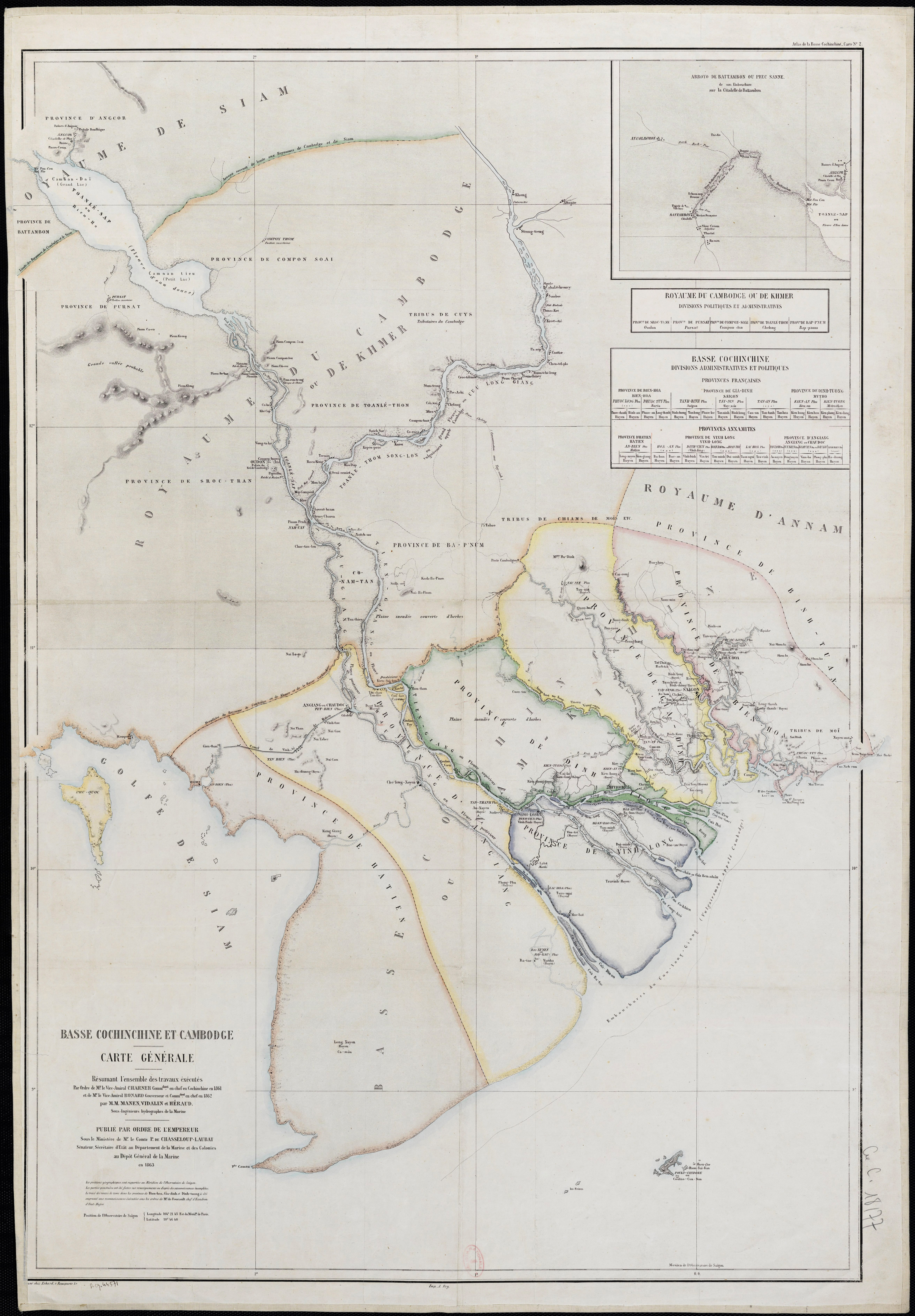|
VÃ m Cáŧng Bridge
The Và m Cáŧng Bridge ( vi, Cᚧu Và m Cáŧng) is a road bridge over the Hášu Giang River (also known as Bassac), a distributary of the Mekong River, in the city of Long XuyÊn in Vietnam. Description It is one of two large bridges on the and part of the larger NorthâSouth Expressway West effort. At long, it is the second-longest cable-stayed bridge in Vietnam. Planning Before 2010, traffic across the Bassac river's banks were dependent on travel by wharf and ferry. The opening of the Cᚧn ThÆĄ Bridge in 2010 helped to connect the city of Cᚧn ThÆĄ with VÄĐnh Long province, allowing for further economic development in the Mekong Delta. However, other high traffic areas of the Mekong River remained dependent on wharfs and ferries, including the Và m Cáŧng ferry that had been in operation since 1925. In 2011, national transportation agencies in Vietnam proposed a transportation plan for the Mekong River Delta region, part of which included the construction of the Và ... [...More Info...] [...Related Items...] OR: [Wikipedia] [Google] [Baidu] |
Bassac River
The Bassac River ( km, áááááááķááķáá; TonlÃĐ Bassac) is a distributary of the TonlÃĐ Sap and Mekong River. The river starts in Phnom Penh, Cambodia, and flows southerly, crossing the border into Vietnam near ChÃĒu Äáŧc. The name Bassac comes from the Khmer prefix âpaâ (father or male) added to sak (ááááá·) (power or honor), a Khmer word borrowed from the Sanskrit âsaktiâ (āĪķāĪāĨāĪĪāĪŋ). In Vietnam it is known as the Hášu River (''SÃīng Hášu'' or ''Hášu Giang'' in Vietnamese). The Bassac River is an important transportation corridor between Cambodia and Vietnam, with barges and other craft plying the waters. A city of the same name was once the west-bank capital of the Kingdom of Champasak. Sak (ááááá·) can also be seen in the Khmer spelling of Champasak; (á ááááķááááá·). USS ''Satyr'' (ARL-23), a recommissioned repair ship originally built for the United States Navy during World War II, served on the Bassac ... [...More Info...] [...Related Items...] OR: [Wikipedia] [Google] [Baidu] |
Mekong Delta
The Mekong Delta ( vi, Äáŧng bášąng SÃīng Cáŧu Long, lit=Nine Dragon River Delta or simply vi, Äáŧng Bášąng SÃīng MÊ KÃīng, lit=Mekong River Delta, label=none), also known as the Western Region ( vi, Miáŧn TÃĒy, links=no) or South-western region ( vi, TÃĒy Nam Báŧ, links=no), is the region in southwestern Vietnam where the Mekong River approaches and empties into the sea through a network of distributaries. The Mekong delta region encompasses a large portion of south-western Vietnam of over . The size of the area covered by water depends on the season. Its wet coastal geography makes it an important source of agriculture and aquaculture for the country. The delta has been occupied as early as the 4th century BC. As a product of Khmer, Vietnamese, Chinese, and French settlement in the region, the delta and its waterways have numerous names, including the Khmer term Bassac to refer to the lower basin and the largest river branch flowing through it. After the 1954 Ge ... [...More Info...] [...Related Items...] OR: [Wikipedia] [Google] [Baidu] |
Bridges Completed In 2019
A bridge is a structure built to span a physical obstacle (such as a body of water, valley, road, or rail) without blocking the way underneath. It is constructed for the purpose of providing passage over the obstacle, which is usually something that is otherwise difficult or impossible to cross. There are many different designs of bridges, each serving a particular purpose and applicable to different situations. Designs of bridges vary depending on factors such as the function of the bridge, the nature of the terrain where the bridge is constructed and anchored, and the material used to make it, and the funds available to build it. The earliest bridges were likely made with fallen trees and stepping stones. The Neolithic people built boardwalk bridges across marshland. The Arkadiko Bridge (dating from the 13th century BC, in the Peloponnese) is one of the oldest arch bridges still in existence and use. Etymology The ''Oxford English Dictionary'' traces the origin of the wo ... [...More Info...] [...Related Items...] OR: [Wikipedia] [Google] [Baidu] |
Cable-stayed Bridges In Vietnam
A cable-stayed bridge has one or more ''towers'' (or ''pylons''), from which cables support the bridge deck. A distinctive feature are the cables or stays, which run directly from the tower to the deck, normally forming a fan-like pattern or a series of parallel lines. This is in contrast to the modern suspension bridge, where the cables supporting the deck are suspended vertically from the main cable, anchored at both ends of the bridge and running between the towers. The cable-stayed bridge is optimal for spans longer than cantilever bridges and shorter than suspension bridges. This is the range within which cantilever bridges would rapidly grow heavier, and suspension bridge cabling would be more costly. Cable-stayed bridges were being designed and constructed by the late 16th century, and the form found wide use in the late 19th century. Early examples, including the Brooklyn Bridge, often combined features from both the cable-stayed and suspension designs. Cable-staye ... [...More Info...] [...Related Items...] OR: [Wikipedia] [Google] [Baidu] |
Road Bridges In Vietnam
A road is a linear way for the conveyance of traffic that mostly has an improved surface for use by vehicles (motorized and non-motorized) and pedestrians. Unlike streets, the main function of roads is transportation. There are many types of roads, including parkways, avenues, controlled-access highways (freeways, motorways, and expressways), tollways, interstates, highways, thoroughfares, and local roads. The primary features of roads include lanes, sidewalks (pavement), roadways (carriageways), medians, shoulders, verges, bike paths (cycle paths), and shared-use paths. Definitions Historically many roads were simply recognizable routes without any formal construction or some maintenance. The Organization for Economic Co-operation and Development (OECD) defines a road as "a line of communication (travelled way) using a stabilized base other than rails or air strips open to public traffic, primarily for the use of road motor vehicles running on their own wheels", ... [...More Info...] [...Related Items...] OR: [Wikipedia] [Google] [Baidu] |
Asian Development Bank
The Asian Development Bank (ADB) is a regional development bank established on 19 December 1966, which is headquartered in the Ortigas Center located in the city of Mandaluyong, Metro Manila, Philippines. The bank also maintains 31 field offices around the world to promote social and economic development in Asia. The bank admits the members of the United Nations Economic and Social Commission for Asia and the Pacific (UNESCAP, formerly the Economic Commission for Asia and the Far East or ECAFE) and non-regional developed countries. From 31 members at its establishment, ADB now has 68 members. The ADB was modeled closely on the World Bank, and has a similar weighted voting system where votes are distributed in proportion with members' capital subscriptions. ADB releases an annual report that summarizes its operations, budget and other materials for review by the public. The ADB-Japan Scholarship Program (ADB-JSP) enrolls about 300 students annually in academic institutions locate ... [...More Info...] [...Related Items...] OR: [Wikipedia] [Google] [Baidu] |
Government Of Vietnam
The Government of the Socialist Republic of Vietnam (), also known as the Vietnamese Government or the Government of Vietnam (), is the executive branch and body of the State administration of Vietnam. The members of the Government are appointed by the President of Vietnam on the advice of the Prime Minister of Vietnam, and approved by the National Assembly. The government is led by the Communist Party of Vietnam (CPV), which is headed by the CPV General Secretary. Names After the establishment of the Democratic Republic of Vietnam on 2 September 1945, based on 1945 Constitution the executive branch is called the Government (''ChÃnh pháŧ§''). The Government is headed by the President. Under the President is the Cabinet which is headed by the Prime Minister (''Tháŧ§ TÆ°áŧng''). From 1959 to 1980, based on 1959 Constitution the executive branch is named as the Council of Government (''Háŧi Äáŧng ChÃnh pháŧ§''). The Council of Government is headed by the Chairman (equi ... [...More Info...] [...Related Items...] OR: [Wikipedia] [Google] [Baidu] |
Korea International Cooperation Agency
The Korea International Cooperation Agency (KOICA, Korean: íęĩęĩė íë ĨëĻ, Hanja: éååéååå) was established in 1991 by the Ministry of Foreign Affairs of South Korea as a governmental organization for Official Development Assistance (ODA) to enhance the effectiveness of South Korea's grant aid programs for developing countries by implementing the government's grant aid and technical cooperation programs. It is led by three-year-term president of the board who is appointed by the President upon the recommendation of Foreign Minister. Mission The Korea International Cooperation Agency was founded as a government agency on April 1, 1991, to maximize the effectiveness of South Korea's grant aid programs for developing countries by implementing the government's grant aid and technical cooperation programs. In the past, development cooperation efforts were focused mainly on meeting the basic human needs (BHNs) of developing countries and on fostering their Human ... [...More Info...] [...Related Items...] OR: [Wikipedia] [Google] [Baidu] |
Long XuyÊn
Long XuyÊn () is the capital city of An Giang province, in the Mekong Delta region of south-western Vietnam. History In 1789, a group of explorers established a small outpost in the Tam Khe canal, naming it Dong Xuyen. Sooner after a marketplace was created and named Long Xuyen, but by the 1860s the area become more well known by the Long Xuyen market than the official outpost's name. From 1877, the reach of Long Xuyen grew as the city's administration become responsible for an increasing number of neighborhoods and wards. It would not be until 1999 would Long Xuyen be designated as a formal city. Geography It is located approximately 1,950 km south of Hanoi, 189 km from Ho Chi Minh City, and 45 km from the Cambodian border. The population of Long XuyÊn city is over 368,376 (2013), with an area of approximately 106.87 kmÂē. The city is subdivided to 13 commune-level subdivisions, including the wards of: Máŧđ BÃŽnh, Máŧđ Long, Máŧđ XuyÊn, BÃŽnh Khà ... [...More Info...] [...Related Items...] OR: [Wikipedia] [Google] [Baidu] |



